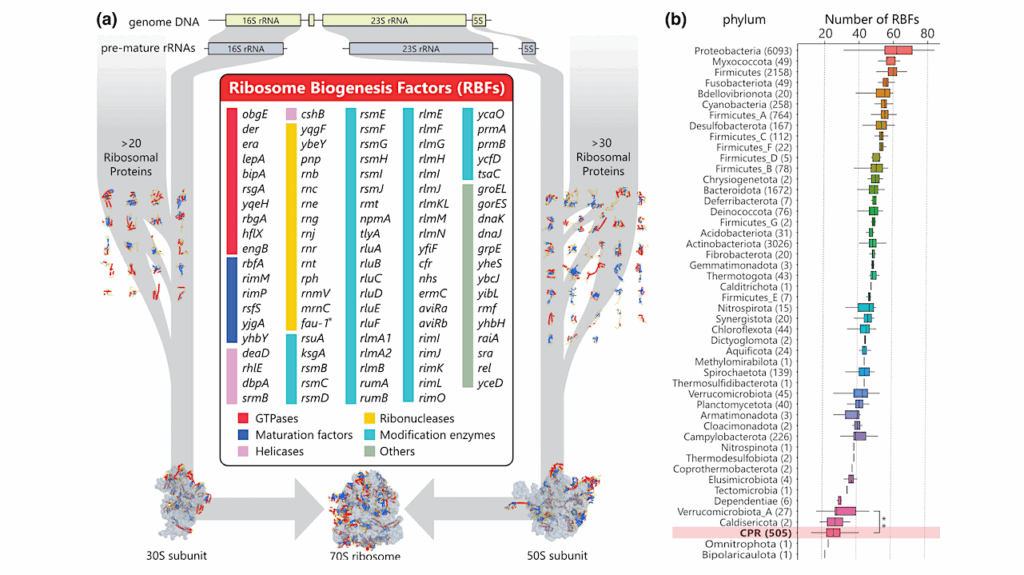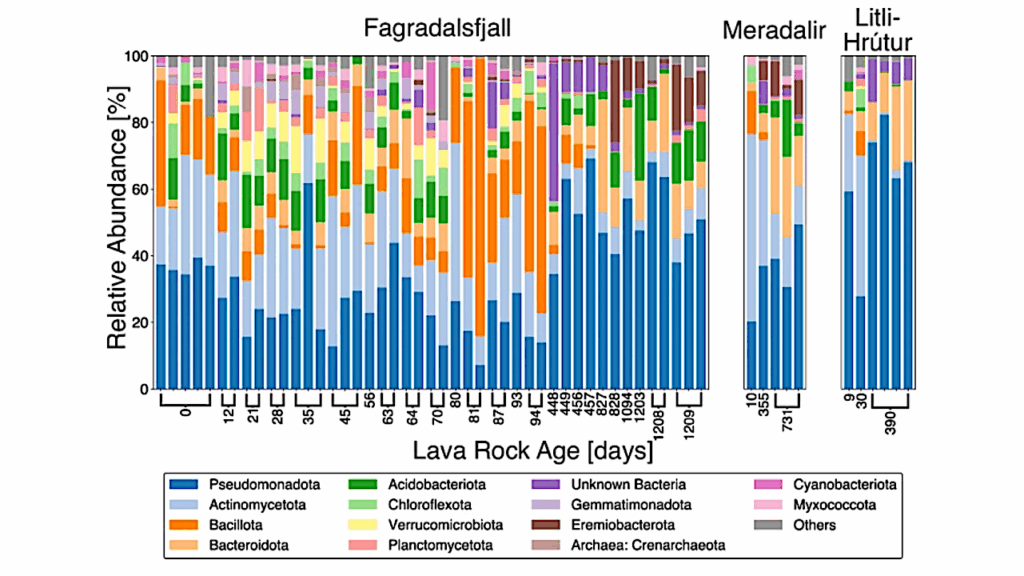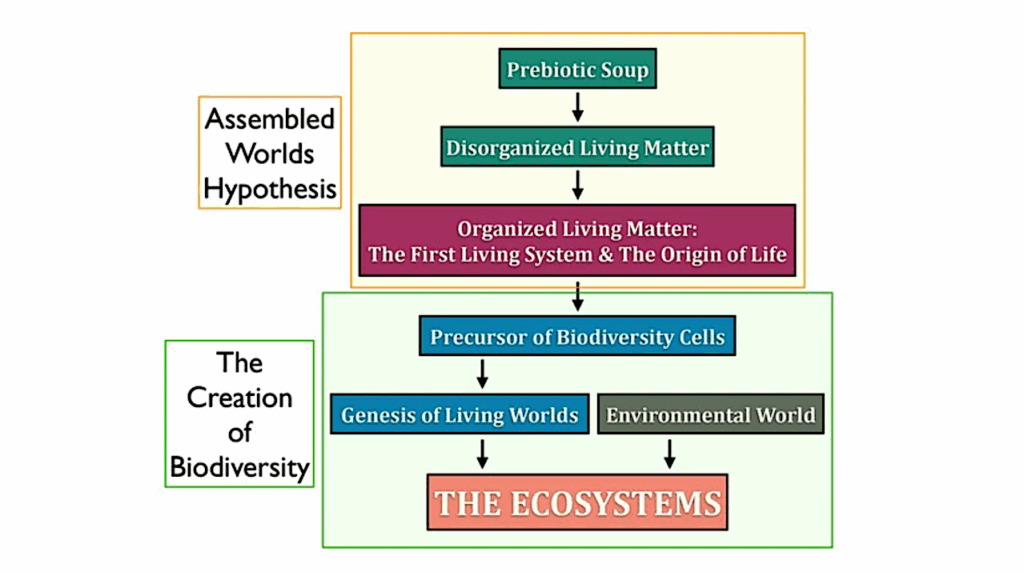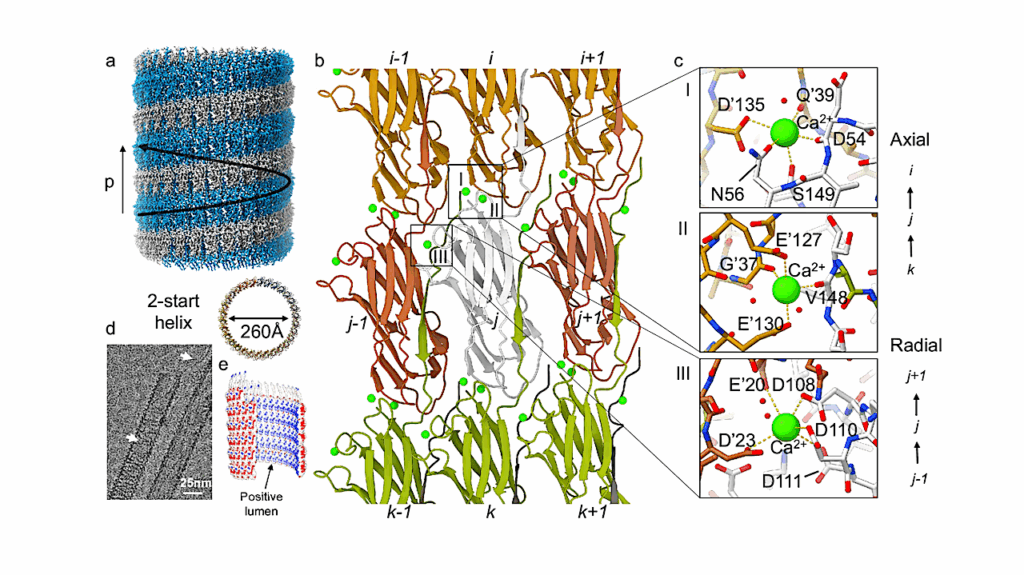Validation Of Cell-free Protein Synthesis Aboard The International Space Station

Cell-free protein synthesis (CFPS) is a rapidly maturing in vitro gene expression platform that can be used to transcribe and translate nucleic acids at the point of need, enabling on-demand synthesis of peptide-based vaccines and biotherapeutics, as well as the development of diagnostic tests for environmental contaminants and infectious agents.
Unlike traditional cell-based systems, CFPS platforms do not require the maintenance of living cells and can be deployed with minimal equipment; therefore, they hold promise for applications in low-resource contexts, including spaceflight.
Here we evaluate the performance of cell-free BioBits® platform aboard the International Space Station by expressing RNA-based aptamers and fluorescent proteins that can serve as biological indicators. We validate two classes of biological sensors that detect either the small molecule DFHBI or a specific RNA sequence. Upon detection of their respective analytes, both biological sensors produce fluorescent readouts that are visually confirmed using a handheld fluorescence viewer and imaged for quantitative analysis.
Our findings provide insight into the kinetics of cell-free transcription and translation in a microgravity environment and reveal that both biosensors perform robustly in space. Our findings lay the groundwork for portable, low-cost applications ranging from point-of-care health monitoring to on-demand detection of environmental hazards in low-resource communities both on Earth and beyond.
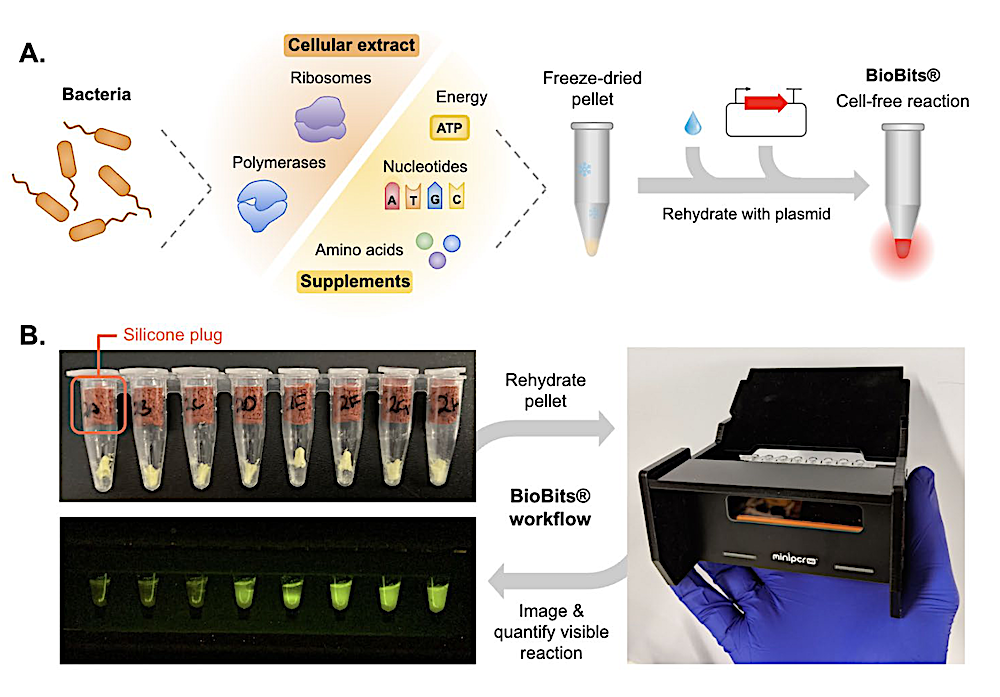
BioBits® is a tool for cell-free transcription and translation that can be coupled with the Genes in Space Fluorescence Viewer for rapid reaction monitoring. (A) BioBits® is prepared by lysing bacterial cells and lyophilizing their cellular extract along with supplements for long-term storage. When needed for use, the cell-free extract is rehydrated with the respective plasmid(s), which the cell-free machinery expresses. (B) The cell-free extract is stored in compact, portable tubes plugged with silicone stoppers to keep the lyophilized material at the bottom of the tube. This design helps ensure that the lyophilized material stays in place during micropipetting and that it doesn’t become dislodged in low gravity conditions. After rehydration with plasmids and as the cell-free reaction proceeds, fluorescent readouts can be directly visualized with the Genes in Space Fluorescence Viewer and imaged with a tablet, phone, or other capture device for quantitative analysis. — biorxiv.org
https://www.biorxiv.org/content/10.1101/2023.12.06.570403v1
Astrobiology, Genomics,



